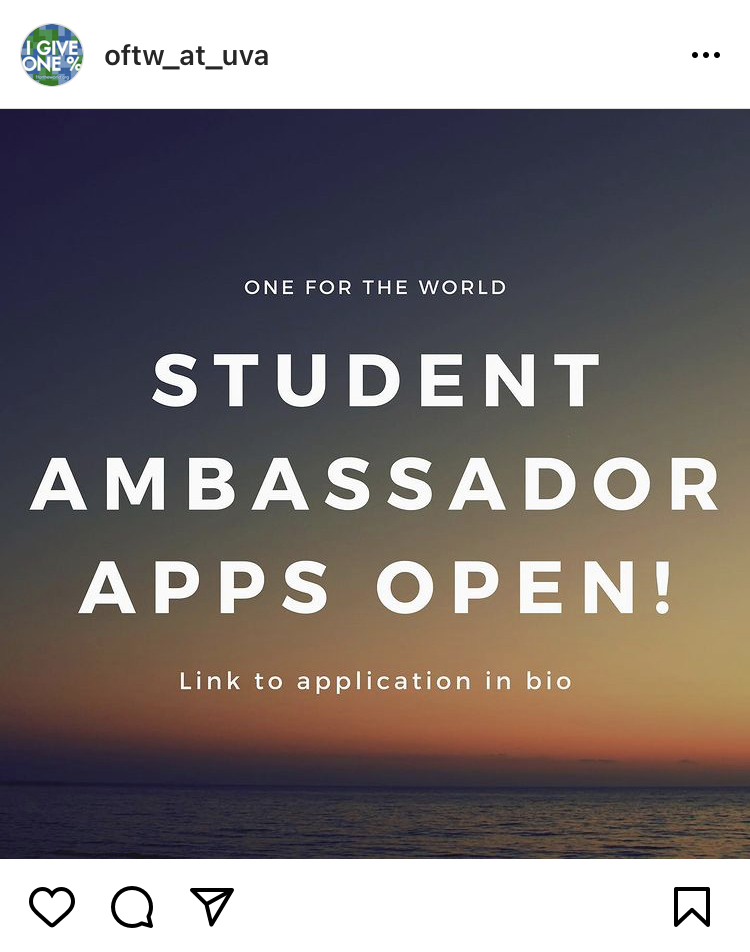OFTW chapters thrive on their ability to connect organically with as many people as possible. The reach and potential impact of a chapter are structurally increased if the chapter regularly recruits new members, who bring additional capacity and new networks to tap into.
Given proper training and clear responsibilities, new members are key to scaling the operations of your chapter up and can substantially increase your chapter’s number of prospective pledgers and, eventually, pledges.
OFTW Columbia Spring 2019 onboarding
Contents:
Before you begin recruiting, you should know exactly what positions are available, and what the responsibilities are for each role. Then, as you are speaking to people at the clubs fair, in classes, or on social media, you can answer their questions accurately.

Step 1: Send out applications (Week 1)
-
Create an application form.
A simple Google Form is best, as they are simple to create and use. Find template application forms here -- copy and edit as you see fit!
-
Distribute the application during the first week of classes.
Tabling at your school's Club Fair is typically the best way to increase the reach of your club early in the term, as well as the size of your mailing list that will receive the application. At the fair you can use this general interest form.
After the club fair, send the application to your mailing list, as well as to friends, classmates, and other student groups whose members might be interested. It's a good practice to send out a reminder a few days before applications are due.
Other modes for distributing the application:
- 1:1 outreach to your friends / your e-board's friends who you think would be interested. It's important not to rely solely on your friends if they aren't bought in to OFTW's missions, but when targeted well, this can reliably produce some of your most effective e-board members.
- Hang posters with a QR code for people to quickly scan while walking by. Put these in heavily trafficked areas on campus -- dining halls, study spaces, etc.
- Make announcements in classes. Be sure to bring the QR code for the application or some other way for people to register interest. Here is an email you can send to professors.
- Make announcements at other club meetings or ask them to share a blurb with their mailing list. Here is an email you can send to club presidents.
- Use social media and listservs! Sharing the application in interactive stories on Instagram (including polls and questions) can be a particularly engaging way to draw people in. You can use your OFTW page but also encourage all current members to share the post on their personal accounts to have a wider reach. You should also consider doing takeovers of other accounts such as the university account.

Step 2: Review applications (Weeks 1-2)
- Review and respond to the applications on an ongoing basis. Ideally, each applicant receives some response within 48 hours of their applying. Waiting too long will result in many folks losing interest.
- Interview the applicant. Schedule a 1:1 call or coffee chat to get to know the applicant and their interest in OFTW. This 1:1 meeting is a crucial step in the process, as it allows you to screen applicants, match them to a role that fits their interests and skill set, set expectations early, and form a social relationship.
- Send out a congratulatory email along with information about your internal onboarding meeting.
Time spent managing your team comes at the cost of time you could be spending asking people to take the pledge. So, chapters with limited leadership capacity (especially those run by a single president) may want to maintain a smaller board, foregoing the potential gains offered by broader membership in order to fully develop and realize the potential of a smaller chapter.
Key Resources
- Application Templates
- Mailing List Signup Templates
- Tabling 101
- Chapter structure
- Interview questions
- Clubs outreach copy
- Professor outreach copy
Team Management